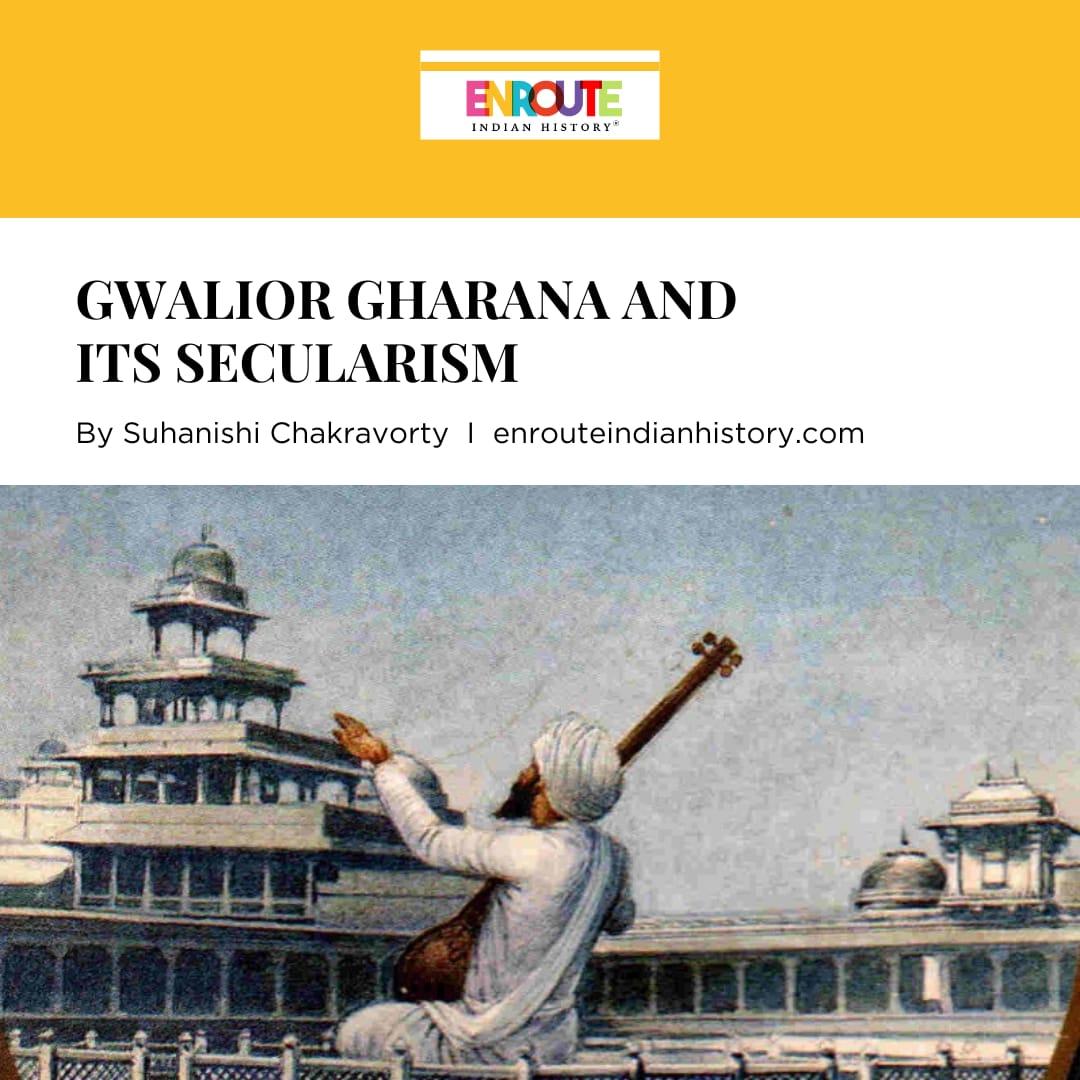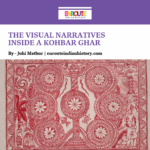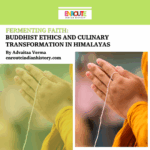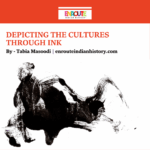
Introduction
Firstly, I would like to mention that this article nowhere claims to be a full and final resolution or comment on Indian Classical music or its complex yet astonishing history. Rather it could be the beginning of an understanding that will construct, deconstruct and will most certainly make thousands of mistakes. It is merely an attempt to rewrite some handful of theories along with their available history. The article could be taken as a reflection on the micro amount of exploration done by a mere reader. The reason for clarifying this aspect in the first go is not only just because the subject is an illustriously huge one (for that matter every other subject is) but because North Indian classical music is also one of the few remaining live examples of knowledge-gathering, documentation and teaching which is completely Indian and free from European influence. Knowledge spreading and preparing the next generation is fully unique which involves lifestyle, belief system and the sense of ‘dharma’ in the truest form of Indian sense.
What are ‘Gharanas’ and what is the big deal about them?
Which brings us to the next most important question. Since the education system in India is greatly overruled by the British education system due to the influence of colonialism we would unfortunately have to go back there and explain our own system from that perspective. ‘Gharana’ speaks very loosely like ‘music schools’ but it is a lot more than that (Banerjee, 2020). Today’s North Indian classical music and the ‘schools’ are formed under the Mughal patronage hence the history is very much intertwined there. This could also be the first point from where the notion of ‘secularism’ begins. So, to cut it very simply, the Mughals brought their own heritage into this huge, already culturally fabricated subcontinent and as the musicians kept receiving patronage they incorporated the local folk music and their elements, and stylisation into what they already had. This gave us the ‘Khayal’ and the modern-day classical instruments.

(From the cover of Kudrat Rangbirangi, source: Mukhopadhyay)
With time, several courts were established at different locations and the court musicians naturally gathered there. Within four to five generations, they travelled through melodies and forms that were particularly popular around these local courts and incorporated them to further sophisticate their language. Then, with subsequent ‘sophistication’ made it ‘eligible’ enough to be presented in front of the Badshah. These became intangible knowledge and heritage as these were genius works! This knowledge was to be passed down through generations to come. The possible receivers are their own children and the ‘Shahgird’ of these court musicians or Ustads. Undoubtedly, not everyone was a democratic believer in the universalization of knowledge, since this included securing that important post on the ‘darbar’, the social security and their ego. Needless to say, these decisions are influenced by contemporary India and its moral system which was again a very complicated social, religious and philosophical foundation. However, it looks like after almost five hundred years of struggle that complicated yet rigid sense of loyalty towards this ‘knowledge’ and propagation method has secretly been carrying out an education system which is so unique and fundamental in its own glory. It has formed the highest form of art that is not yet decodable by the new age AI or any religious dogmatism even in the twenty-first century.
Gharanas and their siblings
There are many ‘Gharanas’ in the North Indian classical music system and oddly enough (or maybe not!) all are names of different geographical places. Some major ones are ‘Agra’, ‘Gwalior’, ‘kirana’, ‘Jaipur’ and ‘Vishnupur’. Then there are thumri ‘gharanas’ like ‘Benaras’ and ‘Lucknow’ and somewhat joint gharanas like ‘Rampur Shajahanpur’, ‘Agra-Atraouli’ and ‘Agra-Shaswan.’ There is one unique ‘Gharana’ which has supposedly not accepted ‘Talim’ for its newer generation from other Gharanas for about fourteen generations. This is the ‘Khurja’ gharana (Mukhopadhyay, 2000). Diverse reasons are to be found for this non-communication in interdisciplinary practice but as a result, their uniqueness and stylization are retained. Now, this could be both a good and a bad thing. We will leave that to individual readers and their perspectives.
Agra gharana is the oldest gharana when one looks at the timeline. This is the gharana is still the closest to the ancient ‘Dhrupad’ style which was a fully developed music school of India before this whole thing was happening and is a predecessor of the modern-day ‘Khayal’. It is needless to say that today’s ‘Khayal’ would not be born without the contribution of sufi kawalis or the ‘kawal bachhe’. However, the traditional dhrupad ‘gayaki’ might still be shadowing the ‘Agra’ gayaki but it is the ‘Gwalior’ gharana that has a greater contribution in the formation of the other gharanas(Mukhopadhyay, 2000). This is major because people from this Gharana married outside their clan and often the formation of new clans has happened with the help of ‘Talim’ by a Ustad hailing from the Gwalior ‘Gharana’.
Historical aspects
It might be a political scandal today to mention but there has been a tradition of doing Riyaz with both ‘karim Rahim’ and ‘Hari Om Ananta Narayan’ among the Hindu and the Muslim Ustads of the Gwalior Gharana and yes, Riyaz was more important to them than the name of the Gods(Mukhopadhyay, 2000).. If the requirement be such, a Ustad would spend his life with ‘Hari om nom tom’ and a pandit would shed his tears on a ‘Karim Rahim’ piece. These people were musicians through and through and they had the requirement to practice their art more than they required to please the kings of the country. Yet, it is untrue that they could survive without the patronage of the kings. But, they dared.
It is popular knowledge that Akbar has placed a huge importance on the musicians of the court. They survived the next generation but with Aurangzeb, they lost importance in the court. There is a popular story about this displeasure. Once the musicians of the city arranged for a ‘zenaza’ or a funeral rally as a form of protest and in an attempt to attract the attention of the Badshah. In response, Badshah Aurangzeb promptly stated that the grave should be dug so deep that the music may never come out from there. We cannot scandalize the King even today but this approach was calling for the genre to survive and start looking for other patrons. The language spoken at that time was different. It was Hindustani, neither Arbi, Farsi nor Sanskrit. The mixed language welcomed musicians irrespective of their religious identity and hence their unity for survival as artists was strong.
However, the scenario changed when kings like Asafdoullah took a different turn. He invited several musicians to his court. A couple of years before this Niyamat Khan and Feroz Khan had started composing thousands of Khayal compositions which were hugely inspired by the Dhrupad. These are the Sadarang and Adarang who are immortalized through these beautiful compositions and today no disciple of North Indian Classical music of any Gharana are unaware of these two. Nevertheless, under the patronage of Asafdoulla, there was another ustad named Ghulam Rasul Khan who was undertaking the same project as Sadarang and Adarang. Shakkar Khan Kawal who happens to be Shishya and son-in-law of Ghulam Rasul Khan paired up with his brother Makhan Khan to further intensify the work of creating khayal from Dhrupad (Lahiri, K., 1977). These two are our ‘Kawal bacche’.
So, where is Gwalior here? The two names that are found to be as founders of Gwalior Gayaki are Abdullah Khan and Kader Baksh Khan along with their son Natthan Khan or Peer Baksh. Now, this Natthan Khan is actually Makkhan Khan Kawal’s son. Kader Baksh also happens to be the father of Haddu Khan, Hassu Khan and Natthu Khan. After the death of Shakkar Khan, Makkhan Khan arrived at the Gwalior and soon attracted the attention of the king.
Further Development of the Gwalior Gharana
Mukhopadhyay states that although connected by bloodline these three brothers Haddu, Hassu and Natthan did not have a resemblance with Kader Baksh or Natthan peer Baksh in their music. They rather resembled the Agra style that came from Ghulam Abbas Khan. It was rather a heavy style that was dependent on the weight of the Gayaki and not the complexities of the taans.
However, they met with the style of their father, in a rather peculiar way. In the court of Jarajirao Sindhiya suddenly one individual appeared and called himself Mohammad Khan. This man happens to be the son of Shakkar Khan and cousin of Natthan peer Baksh and a proud carrier of the ‘Kawal Bachhe’ tradition. The three brothers and their patron all got mesmerized by the ‘gayaki’. Jarajijao Sindhiya the then-contemporary king of Gwalior decided that these brothers would be listening to Mohammad Khan in disguise and thus they could learn while the Ustad performs in the court. This started to happen but nobody told Muhammad Khan that his ‘gayaki’ was been studied and also copied. After two years of this practice, the king finally unveiled the truth and declared that now Muhammad Khan should proudly take these boys as his disciples as they were already his ‘Sunni Shahgrid’ (means somebody who learnt while listening and not exactly from direct teaching). This happened after he made all three of them come forward and sing. Muhammad Khan realized that he had been cheated on and his knowledge had been stolen from him without his consent. He nevertheless, had to agree to take these boys as his student permanently but he never secretly forgave the king. After a few days, he left the court for another Patron and started to prepare his own set of pupils there. So, Gwalior Court became the location where different types of gayaki came together and formed a beautiful style which later turned to the modern-era Hindustani music. However, that happened in the sacrifice of some trust. Muhammad Khan soon left the court but the three brothers remained.

(Source: The maestros, source: shoppingmaster)
Trust and musical talent has to go hand-in-hand
Music was the ultimate solace and peace for these people who were trying to fit in the era of the 1857 mutiny with their art. There is another story which illustrates how much dedication these people had for their art. In those days Tankari or a particular style of fast singing had several expressions associated with it. We get names of these compositions like ‘Karak bijli taan’, ‘Nanga Talwar taan’ and ‘Hathi chinghar’ etc. Once in a conference, Hassu Khan’s one such ‘Hathi Chinghar’ taan received significant attention from a rich possible patron. Once asked for another such taan he stopped midway as blood came out of his mouth. Some say he couldn’t hold the power in his lungs while others state that he probably had broken one of his ribs which pierced his lungs. Whatever may be the reason his grandfather, present in the concert wiped his mouth with his own shawl and said ‘Beta marna hi hain to taan puri karke maro’, which translates to ‘Son, if you really need to die then please finish the taan first then go ahead.’ Hassu Khan survived that concert but not for many days. His brother Haddu Khan had but he spent his last days as a paralyzed, helpless man on his bed. However, that did not stop him to prepare his students.
Haddu Khan once stated that he did not want to teach Muslim boys from the fear of getting cheated. This could be a reflection of what he had been put through in his heydays at Jarajirao Sindhiya’s Gwalior court.
The mutiny has caused some real trouble
It is important to note that the political condition of India was extremely turbulent at this time. In fact, the turbulence had begun from the decline of the Mughal empire and this whole process of transferring power to the British. The formation of different ‘Gharanas’ almost always coincides with the anxiety of patronage and sometimes is even influenced by it. So, to speak it is a common trend among the various Ustads of this time to not pass their lineage to people casually. Mostly it remains either strictly within the family or is transferred to only extremely talented ‘shahgird’ chosen exclusively by the Ustads themselves if not stolen. But, surprisingly we find people to be much more trustworthy and down to earth whenever they hear a piece of good music. The Indian subcontinent has respected the arts and heritage in all respects even when the times are trying. Let’s look at the next generations of the Gwalior Gharana when Hindu Pandits have been prepared by the Khan trinity and are blooming.
No other identity like Hindu or Muslim survives in front of ‘musicians’
Jarajirao Sindhiya’s son had not come of age when there was a requirement for him on the throne. So, the British regiment employed one councillor to look after Gwalior instead. This new person came in and cut the patronage for native musicians to almost half immediately. So, Nisar Hussain Khan who was Natthu Khan’s son came to the streets. One of his disciples was called Shankar Pandit. He took this man to his home because ‘Ustad’ or ‘Guru’ comes before everything. This moral value was probably the thriving drive that kept the music and the lineages alive. This is also a promise from one musician to another. The legend goes that he would even leave a silver coin under ‘Ustadji’s pillow to cover his opium cravings.

(Krishna Rao Sankar Pandit, source: scroll.in)
Ustad Nisar Hussain Khan would go to temples with him, wear clear garments and often say that he too was a Pandit in his last life (Goregaonkar and More, 2022). In the next generation, we find the son of Shankar Pandit who was called Krishnarao Shankar Pandit receiving Talim from both his father and Ustad Nisar Hussain Khan. This man was extremely ambitious for getting popular. He even declared suicide if all the compositions and styles were not taught to him fully.

(Nisar Hussain Khan, source: Mukhopadhyay, 2000)
Music is freedom and it has been for a long time. The political power and the change of hands have merely managed to create insecurities but never have it able to completely erase their existence of. Rather in some way or the other it has survived. Gwalior Gharana is the foundation for the younger Gharanas in terms of further musical research and performance development that happened in different parts and directions. Some concentrated more on the taans while others tried to work on the tones and semitones while others tried to further ornamentalise the compositions with rythymic breakdowns. The amazement and the creativity of these artists have managed to hold the attention of the patriots (Barnett, E.B., 1975). The era in which today’s Khayal developed is the era when the musicians were turning from Mughal courts to public performances. In other words, music in this period needed to be recreated so that it fits the large audience and performance spaces that soon developed in Bombay and Kolkata. The small court traditions and the type of music quite adequate for that setting had to change. Musicians did that quite effectively and they did not bother who was called what. ‘Secularism’, ‘documentation’, ‘heritage’, and ‘preservation’ are not just words but concepts that came with the British. Today after this many years of independence one needs to stop and rethink ‘Did we really need these words with this history in hand?’
Bibliography
Mukhopadhyay, K. P. 2000 Kudrat Rangi Birangi. Kolkata: Ananda Publishers Pvt. Ltd.,
Banerjee, S., 2020. Gharana: How Far Rigid or Flexible?. Sangeet Galaxy, 9(1).
Mittal, D.K., Purandare, S. and Sharma, N., 2013. Patterns and Signature of Gwalior Gharana in Indian Classical Music. Indian Journal of Arts, 3(7), pp.1-3.
Banerjee, S., 2021. GHARANA MUSIC ACKNOWLEDGES VARIETY AND VERSATILITY: CONVENTIONAL RAGAS, UNCONVENTIONAL USAGES.
Lahiri, K., 1977. BETTIAH GHARANA-A School of Dhrupad. Journal of the Indian Musicological Society, 8(3), p.29.
Goregaonkar, S. and More, S., 2022. Historical study of musical construction of Khayal and its association with establishment of Gwalior Gharana. Sangeet Galaxy, 11(1).
Barnett, E.B., 1975. Vmanrao H. Deshpande. Indian Musical Traditions: An Aesthetic Study of the Gharanas in Hindustani Music. Translated by SH Deshpande. Bombay: Popular Prakashan, 1973. 117 pp. Yearbook of the International Folk Music Council, 7, pp.162-164.


















